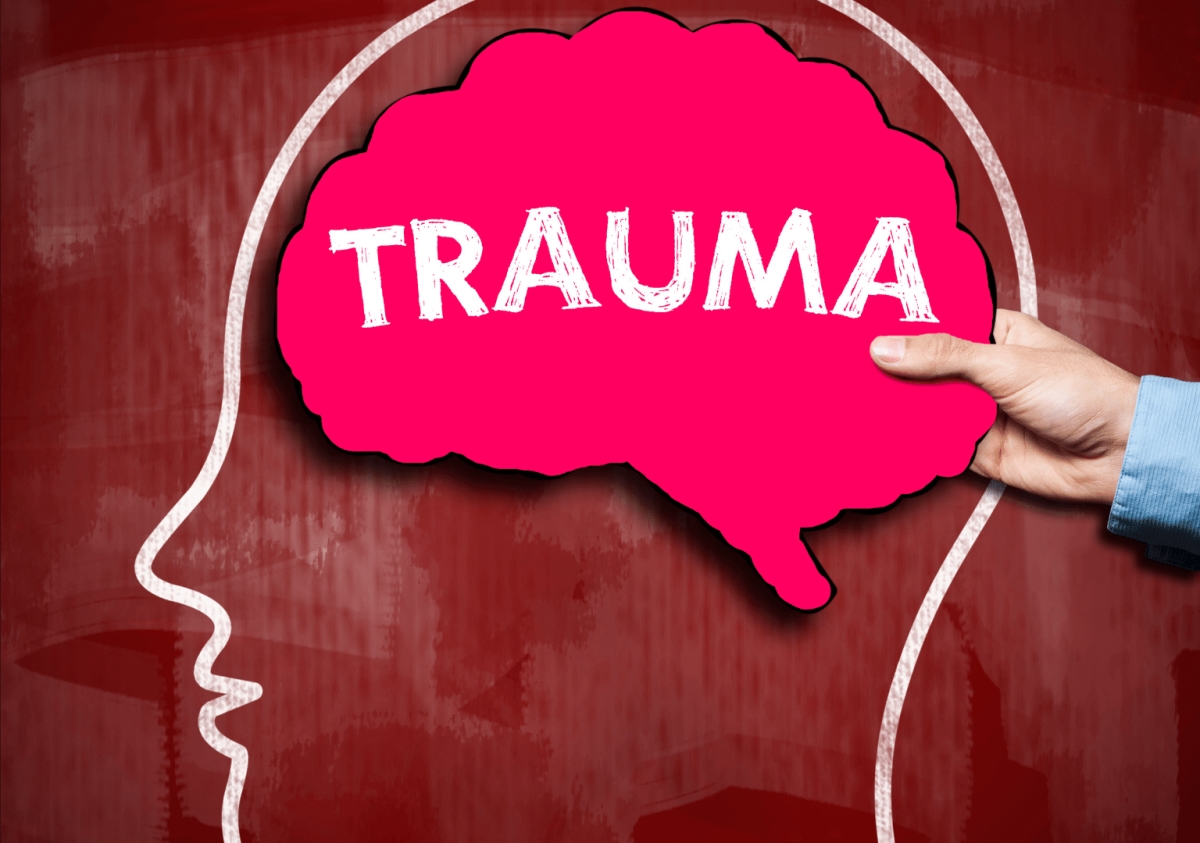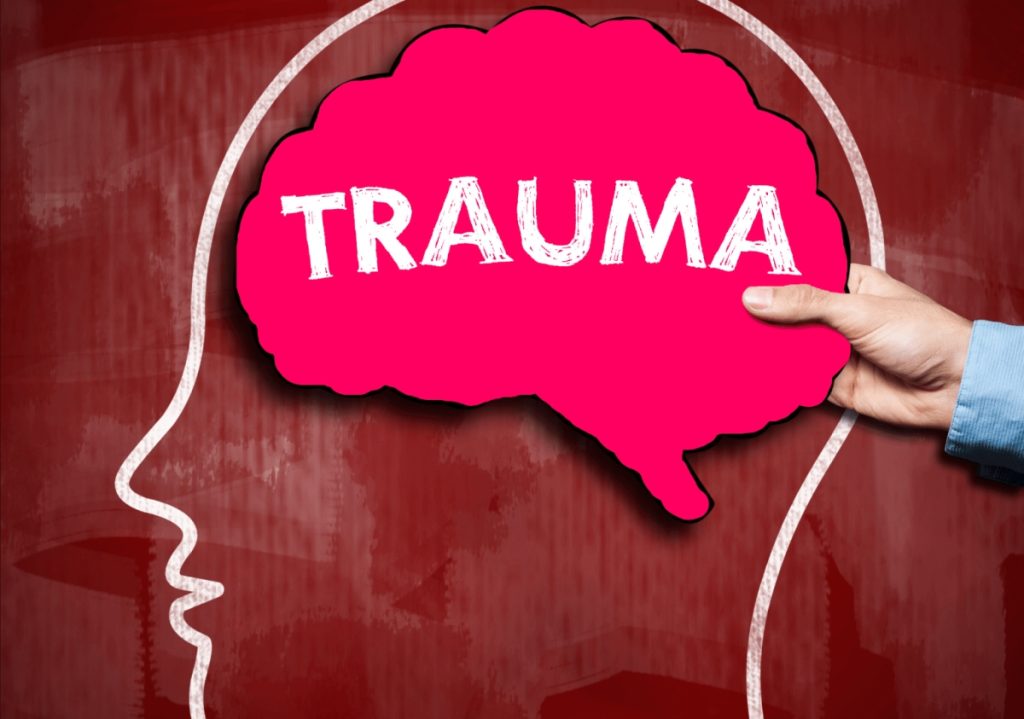
Major Psychological Key #1 To Long-Term Weight Loss Results: Release Trapped Emotions


Major Psychological Key #1 To Long-Term Weight Loss Results: Release Trapped Emotions
The scientific consensus is clear that adverse childhood experience predicts a struggle with being overweight, becoming obese, being vulnerable to all kinds of diseases, and having a shorter lifespan.
Cleaning House And Eliminating Trapped Emotional Traumas
According to EFT (emotional freedom technique) experts, Craig Weiner and Alina Frank, a NORMAL person has anywhere from 300 to 500 “small traumas” stored in their nervous system. “Normal” here means not coming from an abusive upbringing.
What creates a “small trauma”?
- It’s emotionally painful
- It’s unexpected
- The person isn’t resourced (doesn’t have the tools) to deal with the event
- The person feels alone
In our professional opinion, this is one of the biggest reasons both industries are failing to help most people get healthy, and why 97% of people who lose weight regain it back.
If you don’t clean house emotionally, the odds of long-term success with your diets is close to zero because you’ll continue to use food as a coping mechanism to deal with the emotional pain.
We believe addressing these traumas and learning healthy ways to cope with stress are critical to achieving any health and nutrition goals. The traumas themselves also keep your body in a defensively unhealthy state that you can’t train, diet or supplement your way out of.

Studies have shown that traumatic memories are stored in your nervous system and throughout your body rather than in your conscious thinking. In fact, many traumatized people aren’t even aware of the exact events that traumatized them. So you can’t rationalize or think your way out of the traumas; you need to clear them by working with the limbic system.
Reactive rage and anger usually happens when events remind us of unresolved painful events from our past. These are “fight-flight-freeze” responses created by our nervous systems. Our brains see things as “threats” and then react.
It’s pretty rare in today’s world to be chased by sharks, knives, and tigers. So why is the body having these stress responses?
It’s because your brain doesn’t differentiate between a physical threat or an emotional threat. The biological response is the same.
When someone loses their job, their mind can start racing and projecting the worst-case scenario. Financial insecurity and fear take hold. Questions like, “What if I can’t pay my rent? What if I can’t buy food for my family?” and so start running through the mind.
When someone leaves a relationship, it’s common for the other person to feel insecure. “What if I’m not good enough? What if I can’t attract someone else? What if I’m alone the rest of my life?”
The core root of these modern stress responses is unprocessed trauma.
When we experience a painful event, unless we “process it” and heal from it, it will get stored into the limbic system as a way to protect us in the future. This is how PTSD (post-traumatic stress disorder) happens. The keyword is “traumatic.”
When trauma happens, people usually resort to emotional repression and suppression to cope with it. This buries the trauma in the emotional limbic system.
Then, the amygdala (the security guard of the brain) scans for threats. Any time it sees anything that is remotely close in nature to those old traumas, it will react. The nervous system goes straight to fight, flight, or freeze.
We all know people that have been bitten by a dog and are scared of dogs their entire life. They’re 40, 50, or 60 years old and they’ll still feel scared of a chihuahua, even if it’s friendly. A dog comes into the elevator with them, the adrenal glands get activated. There’s sweat, tension goes up, and the heart rate speeds up.
Fortunately, there are many tools that have been proven to be effective at clearing traumas. One of the most effective techniques to remove these is EFT and forgiveness work.

Potent Emotional Healers
The limbic system is one of the components of our nervous system. It’s considered your “emotional brain.” Some of the most powerful techniques for cleaning the limbic system include:
1. EFT, also known as tapping.
One of the favorite tools to clear traumas that lead to emotional eating is Emotional Freedom Technique (EFT). It is safe, inexpensive, and now clinically proven to have lasting results.
In a clinical study from Bond University in Australia, 49 overweight/obese adults who received 4-week EFT treatments were compared with 47 who were placed in the waitlist group. After 4-weeks and 12-months, the EFT group experienced significant weight loss, less food cravings, better craving restraint, and psychological coping.
Another randomized controlled trial examined combined portion control with online EFT treatments, compared to portion control and treatment as usual. At 6 months, the portion control and EFT group experienced the greatest improvement in emotional eating, uncontrolled eating, and self-esteem.
The Naturally Thin You study evaluated 76 participants who enrolled in an online EFT group program. At a 12-month follow up, participants lost a significant amount of body weight. On average, each lost almost 8 lbs over the 6 weeks, and ~16.9 lbs during the 12-month follow up. Also, depression symptoms, restraint, and subjective power of food scores significantly decreased.
In healthcare workers who were under a lot of stress, EFT reduced addictive food cravings, along with distress, pain, and psychological symptom severity.
A randomized controlled trial found that EFT significantly reduced salivary cortisol immediately and 30-minutes after a single session of EFT. This effect was comparable to talk therapy or rest . Measures of brain electrical activity found that EFT reduces anxiety brain waves.
2. Effective Forgiveness.
Traumas usually create resentments which cause emotional suffering and can drive self-destructive behaviors. The word resentment comes from the french word “resentir,” which means to REFEEL. If you’re thinking about past events that happened to you with any negative emotions, that qualifies as resentment. Harboring resentments is like drinking poison thinking it’s going to hurt the other person.

The question is how can you clear these negative emotions? Here is the incredibly effective process that we learned working with experts in this field.
- First, write down a list of every fear, resentment, and other negative emotion.
- Get into a relaxed, meditative state.
- Choose 1 negative experience you would like to clear.
- Replay the event and feel the emotional pain and sensation in your body.
- Forgiveness Part 1 – GRATITUDE – What’s The Gift of the experience?
- Forgiveness Part 2 – Take responsibility for the experience. Take ownership of your part in that event.
- Forgiveness Part 3 – Put Yourself In Their Shoes. Aim to understand why they did what they did.
- Forgiveness Part 4 – Compassionate Empathy. Feel compassion for their shortcomings.
- Forgiveness Part 5 – Unconditional Love. Aim to let go and give as much love as possible to the person.
Having both done hundreds of “emotional cleanings,” we can attest it’s one of the most powerful things anyone can do to improve their quality of life. Our emotional reactivity has been reduced by 99%. A serene state of mind is the baseline. Emotional intelligence has significantly improved.
If you do the work, you will become a better version of yourself, guaranteed.
Some people with serious food issues should find trained and trauma-informed mental health professionals that specialize in those areas whether it’s: bulimia, food addiction, or anorexia.
Many people find success by using the 12 steps of OA (Overeaters Anonymous). Going through any 12-step process will make anyone a better human.
We believe releasing trapped emotions and understanding traumas are one of the most important keys to achieving long-term dietary success and happiness.
Our Nutrition Bible is coming soon. .
References
- Gardner R, Feely A, Layte R, Williams J, McGavock J. Adverse childhood experiences are associated with an increased risk of obesity in early adolescence: a population-based prospective cohort study. Pediatr Res. 2019;86(4):522-528. doi:10.1038/s41390-019-0414-8
- Girgenti MJ, Hare BD, Ghosal S, Duman RS. Molecular and cellular effects of traumatic stress: Implications for PTSD. Curr Psychiatry Rep. 2017;19(11). doi:10.1007/s11920-017-0841-3
- Stapleton P, Sheldon T, Porter B. Clinical benefits of emotional freedom techniques on food cravings at 12-months follow-up: A randomized controlled trial. Energy Psychol J. 2012;4(1):13-24. doi:10.9769/epj.2012.4.1.ps.ts.bp
- Stapleton P, Clark A, Sabot D, Carter B, Leech K. Portion perfection and Emotional Freedom Techniques to assist bariatric patients post surgery: A randomised control trial. Heliyon. 2020;6(6):e04058. doi:10.1016/j.heliyon.2020.e04058
- Church D, Stapleton P, Sheppard L, Carter B. Naturally thin you: Weight loss and psychological symptoms after a six-week online clinical EFT (emotional freedom techniques) course. Explore (NY). 2018;14(2):131-136. doi:10.1016/j.explore.2017.10.009
- Church D, Brooks A. The effect of a brief EFT (Emotional Freedom Techniques) self-intervention on anxiety, depression, pain and cravings in healthcare workers. Integrative Medicine: A Clinician’s Journal. 2010;9:40-44.
- Church D, Yount G, Brooks AJ. The effect of emotional freedom techniques on stress biochemistry: a randomized controlled trial: A randomized controlled trial. J Nerv Ment Dis. 2012;200(10):891-896. doi:10.1097/NMD.0b013e31826b9fc1
- Srinivasan TM. Interventional medicine. SEEMJ. 2006;17(2).
